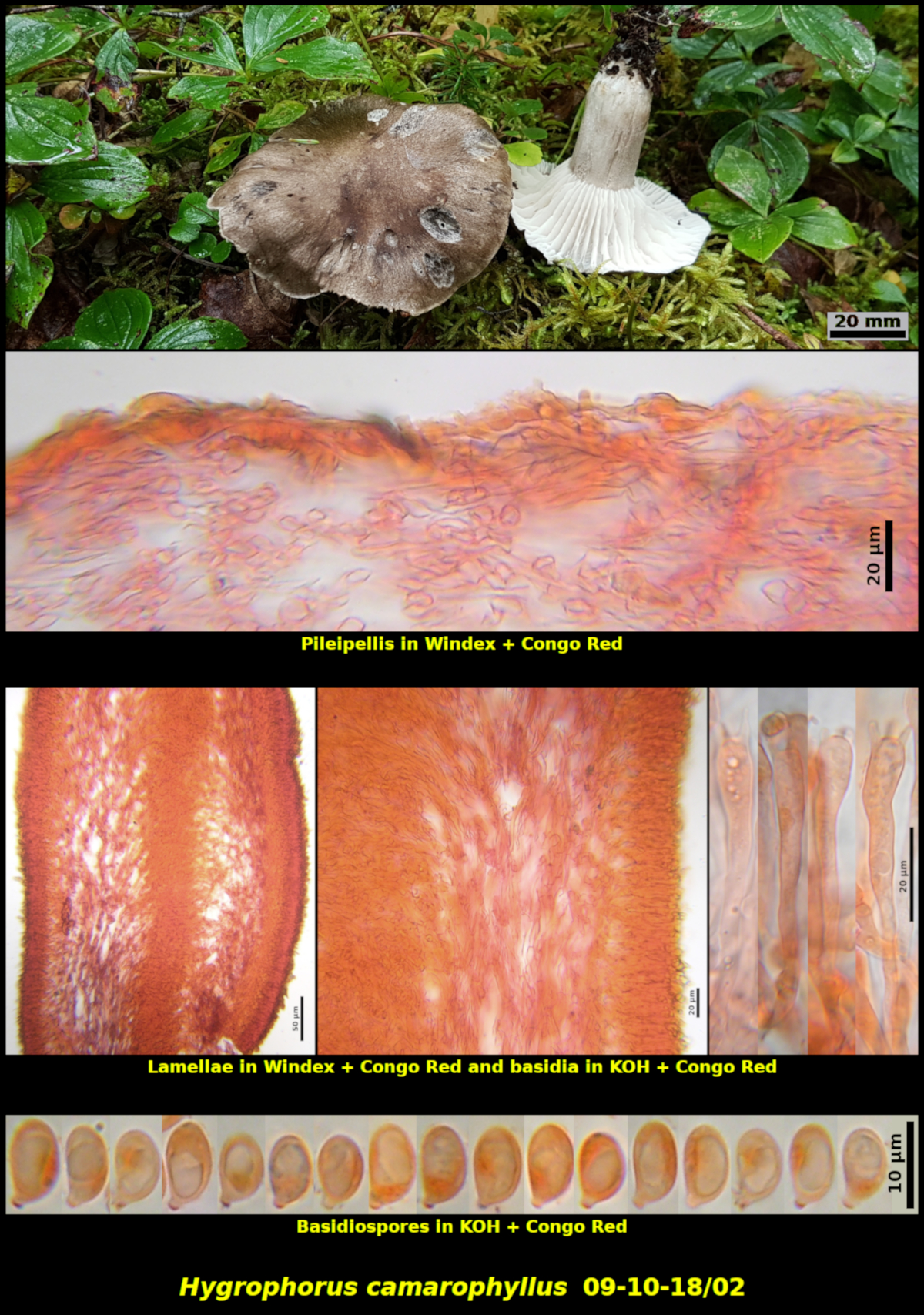Fleshy Fungi of New Brunswick >>
Hygrophorus camarophyllus
Hygrophorus camarophyllus (Alb. & Schwein.) Dumée, Grandjean & Maire

Clustered (2) in soil among gametophytes of Pleurozium schreiberi, associated with Betula cordifolia and Abies balsamea – New River Beach Provincial Park, New River, New Brunswick (09-10-18/02).
Basidiospores white in spore print, broadly ellipsoidal, smooth, without colour changes in Melzer’s Solution, with walls staining well in KOH + Congo Red, 7.0-8.8 x 4.6-6.0 &mum, Q = 1.31-1.89 (average[35]: 7.9 x 5.3 μm, Q = 1.50). Hymenial cystidia lacking. Basidia narrowly clavate, 4-spored, clamped at the base. Pileipellis a thin pellis of parallel to slightly interwoven hyphae with intracellular pigmentation, not gelatinous, with subpellis not greatly differentiated from the pileus trama. Clamp connections present throughout.
This large dark species of Hygrophorus is recognized by its white, decurrent and rather distant lamellae and by its flesh lacking a distinctive odour. The pileus is completely dry and lacking in gelatinous tissues. Like many other members of the genus Hygrophorus, H. camarophyllus appears quite late in the season.
The trama of the lamellae, characterized by a central core giving rise to diverging hyphae, is characteristic of species of Hygrophorus. The central core in Collection 09-10-18/02 was very densely interwoven and difficult to resove with a microscope.
Photographs: D. Malloch (09-10-18/02).